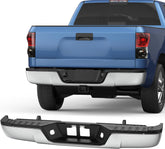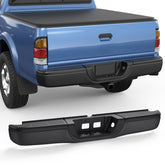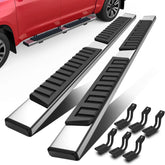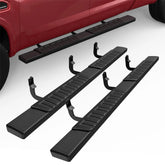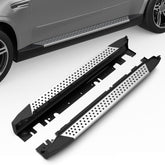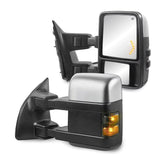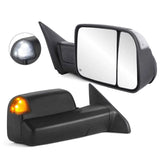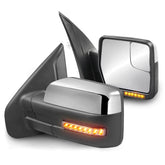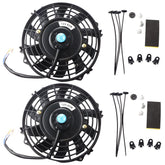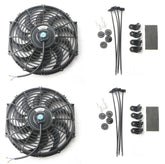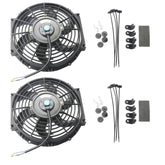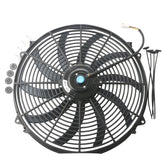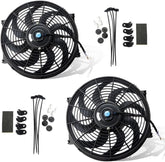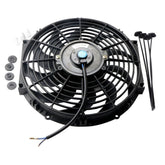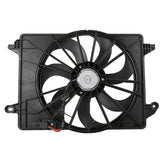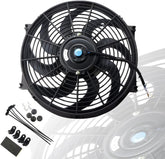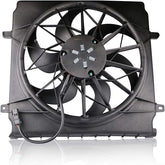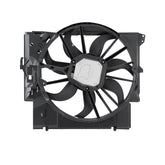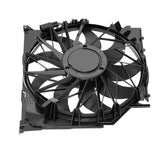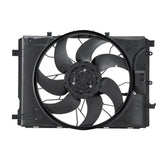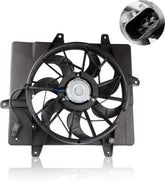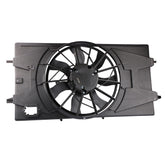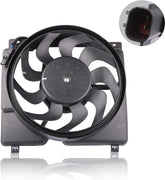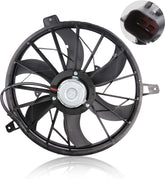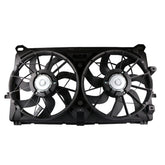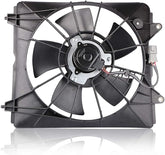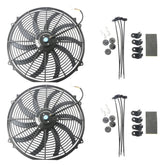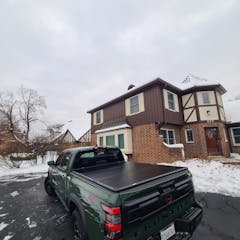Filter
56 results
20
- 10
- 15
- 20
- 25
- 30
- 50
Best selling
- Featured
- Best selling
- Alphabetically, A-Z
- Alphabetically, Z-A
- Price, low to high
- Price, high to low
- Date, old to new
- Date, new to old
Sort
Sort by:
- Featured
- Best selling
- Alphabetically, A-Z
- Alphabetically, Z-A
- Price, low to high
- Price, high to low
- Date, old to new
- Date, new to old
-
Universal Electric Radiator Slim Fan Push/Pull 12V + Mounting Kit (7 Inch) Set of 2Vendor: MOSTPLUSDetails: Brand: MOSTPLUS Warranty: 1Year Color: Black Voltage: 12 Volts Wattage: 80 watts Compatible Devices: Radiator Maximum Rotational Speed: 3000 RPM Surface Finish: PVC Plastic Number of Blades: 10 blades Thickness (in): 2.5 inch Amp Draw: 12 amps Package Includes: 2x 7" OD Slim...
- $46.99
- $46.99
- Unit price
- / per
-
12" Universal Slim Fan Pull/Push Electric Radiator Cooling 12V w/ Mount Kit (Set of 2)Vendor: MOSTPLUSDetails: Brand: MOSTPLUS Warranty: 1 Year Surface Finish: PVC Plastic Type: Push or Pull Type Specification: Maximum Fan FAN CFM: 1730 CFM Maximum Fan RPM: 2250 RPM Thickness: 2.5″ Number of Blades: 10 Blades 12 Volts 6.6 AMP DRAW Package Includes: 2 x 12"...
- $51.99
- $51.99
- Unit price
- / per
-
10" Universal Slim Fan Push Pull Electric Radiator Cooling 12V Mount Kit (Set of 2)Vendor: MOSTPLUSDetails: Brand: MOSTPLUS Warranty: 1 Year Surface Finish: PVC Plastic Type: Push or Pull Type Volts: 12 Volts, Maximum AMP DRAW 8 Volts: 24 Volts, Maximum AMP DRAW 4 Number of Blades: 6 blades Package Includes: 2 x 10" Radiator Fan 1 x Mounting...
- $48.99
- $48.99
- Unit price
- / per
-
16" Universal Slim Fan Push/Pull Electric Radiator Cooling 12V w/ Mount KitVendor: MOSTPLUSDetails: Brand: MOSTPLUS Warranty: 1 Year Type: Push or Pull Type Surface Finish: PVC Plastic Technical Data: Maximum Fan FAN CFM: 1730 CFM Maximum Fan RPM: 2250 RPM Number of Blades: 10 blades Thickness: 3.27" (83 mm) Voltage: 12 Volts Amp Draw: 6.6 Amps...
- $43.99
- $43.99
- Unit price
- / per
-
14" Black Universal Slim Fan Push/Pull Electric Radiator Cooling 12V Mount Kit (Set of 2)Vendor: MOSTPLUSDetails: Brand: MOSTPLUS Warranty: 1 Year Type: Push or Pull Type Surface Finish: PVC Plastic Power Source: Corded Electric Controller Type: Button Control Technical Data: Maximum Fan CFM: 1800 cfm Maximum Fan RPM: 2300±10% rpm Amp Draw: 8 amps Motor: 80 watt Number of...
- $53.92
- $53.92
- Unit price
- / per
-
12" Universal Slim Fan Pull/Push Electric Radiator Cooling 12V w/ Mount KitVendor: MOSTPLUSDetails: Brand: MOSTPLUS Warranty: 1 Year Surface Finish: PVC Plastic Type: Push or Pull Type Specification: Maximum Fan FAN CFM: 1730 CFM Maximum Fan RPM: 2250 RPM Thickness: 2.5″ Number of Blades: 10 Blades 12 Volts 6.6 AMP DRAW Package Includes: 1 x 12"...
- $31.99
- $31.99
- Unit price
- / per
-
Black Radiator Cooling Fan Assembly For Dodge Charger Challenger Chrysler 300 68050129AA CH3115169Vendor: MOSTPLUSDetails: Brand: MOSTPLUS Warranty: 1 Year Material: Plastic Lift Type: Power Fitment Type: Direct Replacement Specification: Length: 18.59" Width: 28.63" Thickness: 3.78" Plug Pin: 3 pin Maximum Rotational Speed: 2500 RPM OEM Part Number: 621-526, 68050129AA, CH3115169, CH3115169Q, CR67014A, 622550 Feature: Geometrically designed plastic...
- $92.97
- $92.97
- Unit price
- / per
-
14" Black Universal Slim Pull/Push Racing Electric Radiator Engine Cooling Fan 12V + Mounting KitVendor: MOSTPLUSDetails: Brand: MOSTPLUS Warranty: 1 Year Type: Push or Pull Type Surface Finish: PVC Plastic Technical Data: Maximum Fan CFM: 900 cfm Maximum Fan RPM: 2300±10% rpm Amp Draw: 8 amps Motor: 80 watt Number of Blades: 8 blades Thickness: 2.5″ Power Connector Type:...
- $32.92
- $32.92
- Unit price
- / per
-
Radiator Cooling Fan Assembly with Motor For 2004-2007 Jeep Liberty 2.4L 3.7L 55037692ABVendor: MOSTPLUSDetails: Brand: MOSTPLUS Warranty: 1 Year Fitment Type: Direct Replacement Location: Behind the bumper in front of the car Specifications: Material: Plastic, Acrylonitrile Butadiene Styrene, Copper Length: 20.95 inch Width: 23.9 inch Thickness: 4.26 inch Plug Pin: 3 pin Maximum Rotational Speed: 2500 RPM...
- $84.99
- $84.99
- Unit price
- / per
-
Engine Radiator Cooling Fan Assembly For BMW 135I 335D 335I 335IS 335XI X1 Z4Vendor: MOSTPLUSSPECIFICATION: Brand: MOSTPLUS Warranty: 1 Year Color: Black Fitment Type: Direct Replacement Placement on Vehicle: Driver Side/LH OE Part Number: 17427545366, 17427801647, 17427788907 FEATURE: Easy Installation High flow design provides long lasting, efficient cooling Factory lubricated for long life Precision ground shaft and hub...
- $169.99
- $169.99
- Unit price
- / per
-
Radiator Cooling Fan Assembly For 2004-2010 BMW X3 2.5i 3.0i 17113442089Vendor: MOSTPLUSSPECIFICATION: Brand: MOSTPLUS Warranty: 1 Year Color: Black Rated Power: 600W Fan Blades: 9 Terminal Quantity: 3 Pins Shroud Material: Plastic Placement on Vehicle: Front Function: Car's Air Ventilation and Cool Interchange Part Numbers: 17 11 3 415 181, 17 11 3 442 089,...
- $163.99
- $163.99
- Unit price
- / per
-
Radiator Cooling Fan Assembly For Mercedes-Benz C230 C300 E250 E350 GLK350Vendor: MOSTPLUSSPECIFICATION: Brand: MOSTPLUS Warranty: 1 Year Color/Finish: Black Fan Blade Material: Plastic Mounting Bracket Included: No Power: 600W Interchange Part Number: 2045000293, 2049066802, 204500029328, A2045000293, A2049066802, 621-373 FEATURE: Geometrically designed plastic blade for optimal circulation and uniform balance. Shroud designed to ensure structural integrity...
- $169.99
- $169.99
- Unit price
- / per
-
Radiator Cooling Fan Assembly For 2001-2005 Chrysler PT Cruiser 2.4L GAS DOHC 5017407ABVendor: MOSTPLUSDetails: Brand: MOSTPLUS Warranty: 1 Year Material: ABS Plastic Lift Type: Power Fitment Type: Direct Replacement Position: Front Specification: Length: 23.78" Width: 21.58" Thickness: 3.67" Plug Pin: 3 pin OEM Part Number: 5017407AA/ 5017407AB 620-022; 620440 674-00735 CH3115118 Feature: Geometrically designed plastic blade for...
- $77.99
- $77.99
- Unit price
- / per
-
AC Condenser Cooling Fan Assembly For Dodge Ram 1500 2500 3500 Pickup CH3113103Vendor: MOSTPLUSDetails: Brand: MOSTPLUS Warranty: 1 Year Material: Plastic Lift Type: Power Placement on Vehicle: Front Specification: Length: 17.56" Width: 21.72" Thickness: 10.04" Plug Pin: 2 Maximum Rotational Speed: 2500 RPM OEM Part Number: 5080646AA, 5080647AB, 5093760AA, 5103464AB, CH3113103, CH3113103Q Feature: Geometrically designed plastic blade...
- $84.95
- $84.95
- Unit price
- / per
-
Front Radiator Cooling Fan For 2005-2010 Cobalt 2005-2007 Saturn Ion 2007-2010 Pontiac G5Vendor: MOSTPLUSDetails: Brand: MOSTPLUS Warranty: 1 Year Fitment Type: Direct Replacement Position: Front Interchange Part: 15211556, 15511556, 15849635, 20824475, 25784022, 621100, GM3115179, GM3115179Q Fitment: Year Make Model Engine 2005-2010 Chevrolet Cobalt 2.2L 2005-2010 Chevrolet Cobalt 2.0L 2005-2007 Saturn Ion 2.2L 2005-2007 Saturn Ion 2.0L 2006-2008...
- $73.93
- $73.93
- Unit price
- / per
-
Radiator Cooling Fan Assembly with Motor For 1997-2001 Cherokee 4.0L LHD 52028337AC 620560Vendor: MOSTPLUSDetails: Brand: MOSTPLUS Warranty: 1 Year Material: Plastic Lift Type: Power Fitment Type: Direct Replacement Specification: Length: 13.39" Width: 13.23" Thickness: 3.39" Plug Pin: 2 pin Number of Fan Blade: 9 Maximum Rotational Speed: 1800 RPM OEM Part Number: 333-55014-200 52028337AC, 620560 621-023 674-00782...
- $61.92
- $61.92
- Unit price
- / per
-
Front Radiator Cooling Fan Assembly For 1999-2003 Jeep Grand Cherokee 4.0L 4.7L 674-00389 52079528ABVendor: MOSTPLUSDetails: Brand: MOSTPLUS Warranty: 1 Year Material: Plastic Fitment Type: Direct Replacement Specification: Length: 22.56" Width: 20.28" Thickness: 3.15" Plug Pin: 2 pin Maximum Rotational Speed: 1800 RPM Lift Type: Power OEM Part Number: 52079528AB, 620-010, 674-00389, CH3115110 Features: Geometrically designed plastic blade for...
- $65.99
- $65.99
- Unit price
- / per
-
Radiator Condenser Cooling Fan Assembly For GMC Sierra 1500 2500 HD Chevy Tahoe 89023366 15780788Vendor: MOSTPLUSDetails: Brand: MOSTPLUS Warranty: 1 Year Material: ABS Plastic Lift Type: Power Fitment Type: Direct Replacement Specification: Length: 37.7" Width: 21.19" Thickness: 5.4" Plug Pin: 2 pin OEM Part Number: 15780788,89023366, 89023368, 89024933, GM3115211, GM3115211Q, 622220 Feature: Geometrically designed plastic blade for optimal circulation...
- $147.95
- $147.95
- Unit price
- / per
-
Driver Side Radiator Cooling Fan Assembly For 2007-2009 Honda CR-V 2.4L 19015RZAA01 19020PNA003 HO3115139Vendor: MOSTPLUSDetails: Brand: MOSTPLUS Warranty: 1 Year Material: Plastic, Acrylonitrile Butadiene Styrene, Copper OEM Part Number: 19015RZAA01, 19020PNA003, 19020RZAA01, 19030RZAA01, HO3115139, HO3115139Q Fitment Type: Direct Replacement Technical Data: Length: 14.69 inch Width: 18.35 inch Thickness: 5.24 inch Plug Pin: 2 pin Lift Type: Power Feature:...
- $63.98
- $63.98
- Unit price
- / per
-
16" Universal Slim Fan Push/Pull Electric Radiator Cooling 12V w/ Mount Kit (Set of 2)Vendor: MOSTPLUSDetails: Brand: MOSTPLUS Warranty: 1 Year Type: Push or Pull Type Surface Finish: PVC Plastic Technical Data: Maximum Fan FAN CFM: 1730 CFM Maximum Fan RPM: 2250 RPM Number of Blades: 10 blades Thickness: 3.27" (83 mm) Voltage: 12 Volts Amp Draw: 6.6 Amps...
- $79.99
- $79.99
- Unit price
- / per
